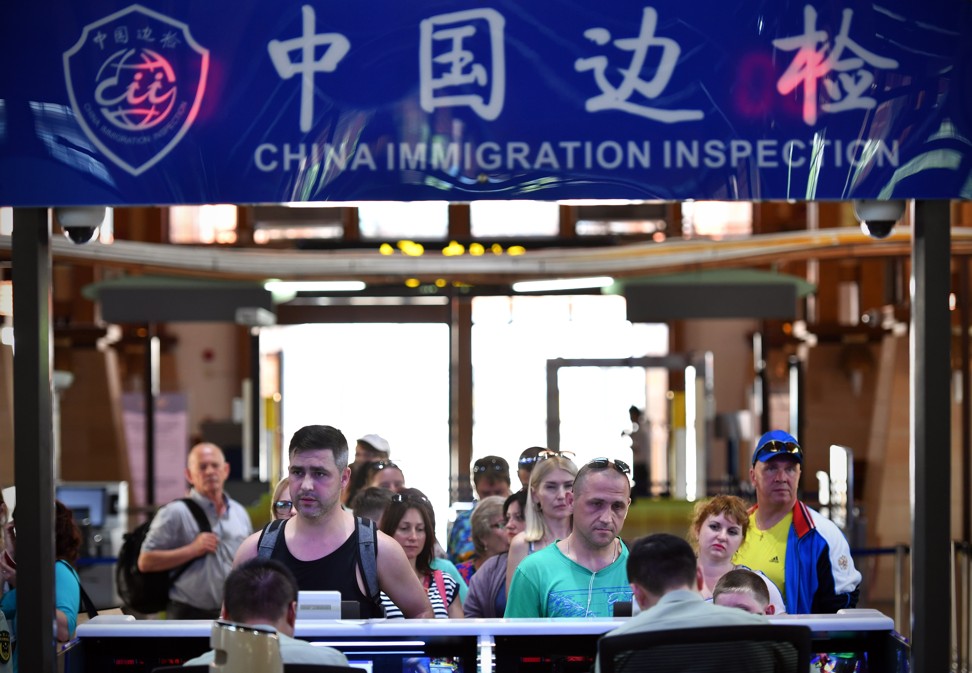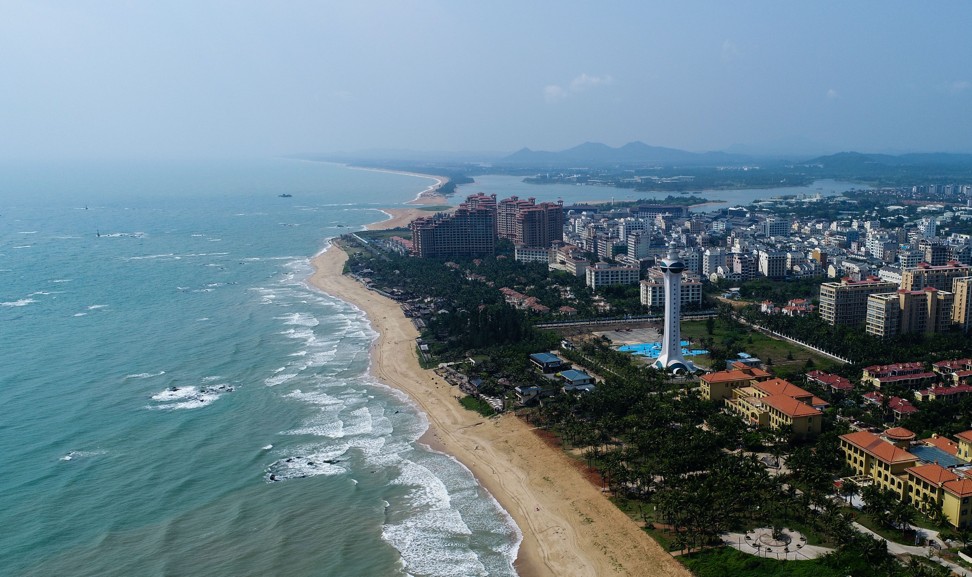
Foreign visitors to China’s ‘visa-free’ holiday island left waiting 24 hours at airport, source says
Travellers don’t need a visa to enter tropical Hainan, but do have to register with officials before they arrive and have their fingerprints taken
Foreign tourists hoping to visit the Chinese island of Hainan under a new “visa-free” scheme may end up spending a day in the arrivals lounge “being processed” and will have their fingerprints taken, sources said.
Beijing waived the visa requirement in May to lure travellers to the tropical province, which it also plans to develop as a free-trade port. Under the new policy, which was announced in April by the State Immigration Administration, individuals and groups from 59 countries – including Britain, France, Germany, Russia and the United States – are allowed to visit Hainan for up to 30 days without a visa.
But that did not mean people just could turn up unannounced, an official said.
“Foreign visitors who are entitled to visa-free entry to Hainan must submit their personal information to the public security bureau and immigration inspection agency [in Hainan] via a local travel agency,” Wang Huailiang, a spokesman for Hainan’s Exit and Entry Administration, said.
“Personal information includes passports, round-trip air tickets, hotel reservation receipts and a travel itinerary.
“People are advised to submit their documents to a travel agency 48 hours before entry. Local travel agents will then pass them on to the relevant authorities.”
Zhou Ping, the deputy head of the provincial tourism development commission, told the South China Morning Post that people planning to visit from overseas should visit En.explorehainan.com for more information about the scheme before making their travel plans.
“Foreign travellers are recommended to contact the exit-entry inspection and quarantine bureau to find out how the visa on arrival scheme works for their country before they start their journey,” he said.
Anyone who arrived in Hainan before having their documents checked could be in for a lengthy delay, a government source said.
Since the scheme was launched there had already been a number of cases of people getting off their flights only to be refused entry until the necessary checks had been made, the source said.
Most of them waited for 24 hours in the arrivals lounge until they were given the green light, he said.
Another source close to the Hainan government said that many foreign travellers had complained about being denied entry and having to submit their personal documents before they were allowed in.
Besides the paperwork, visitors should also be aware that they would be fingerprinted on arrival, another source based in Haikou, the capital of Hainan, said.
The security measure was introduced on April 28, and anyone who refuses to comply with it is likely to be denied entry.
Wang said the Hong Kong-based Hong Thai Travel could provide help and advice on the new scheme for people travelling to Hainan from the city.
An employee said the company charged HK$150 (US$19) for the service and that foreigners should submit their details at least a week before arriving in Hainan.
The province introduced a 15-day visa-free scheme for tour groups from 21 countries in 2000, and in 2010 added five more countries to the list and extended the length of stay to 21 days for visitors from Russia, South Korea and Germany.
The latest extension of the scheme comes after Chinese President Xi Jinping pledged to build Hainan into an international tourist hub and make it mainland China’s first free-trade port by 2020.
According to a detailed plan released by the provincial government on how to implement Xi’s vision, the island province will roll out a series of measures to achieve its target of attracting two million tourists every year from 2020.
The three-year plan was made public on Thursday on the provincial government’s website but was taken down the next day. It was unclear whether the plan was approved by the central authorities.
The provincial government also said it expected to hire 50,000 English-speaking foreign workers – many from the Philippines and other Southeast Asian countries – and buy 2,000 minutes of advertising time a year on international networks, including the BBC, CNN and CNBC.
In May, the number of visitors to Hainan from the 59 countries included in the visa-free programme rose 8 per cent from the same month of last year to 24,000, Xinhua reported, citing figures from the provincial bureau of public security.
Of the total, 19,000 entered China via Sanya, the island’s southernmost city, and the rest through Haikou.



